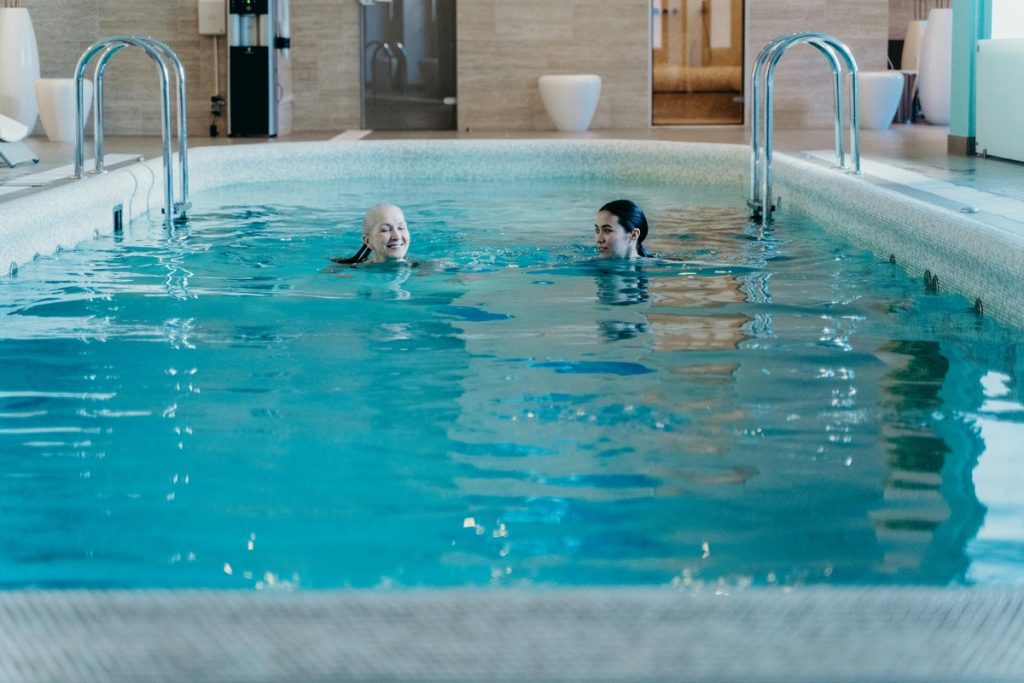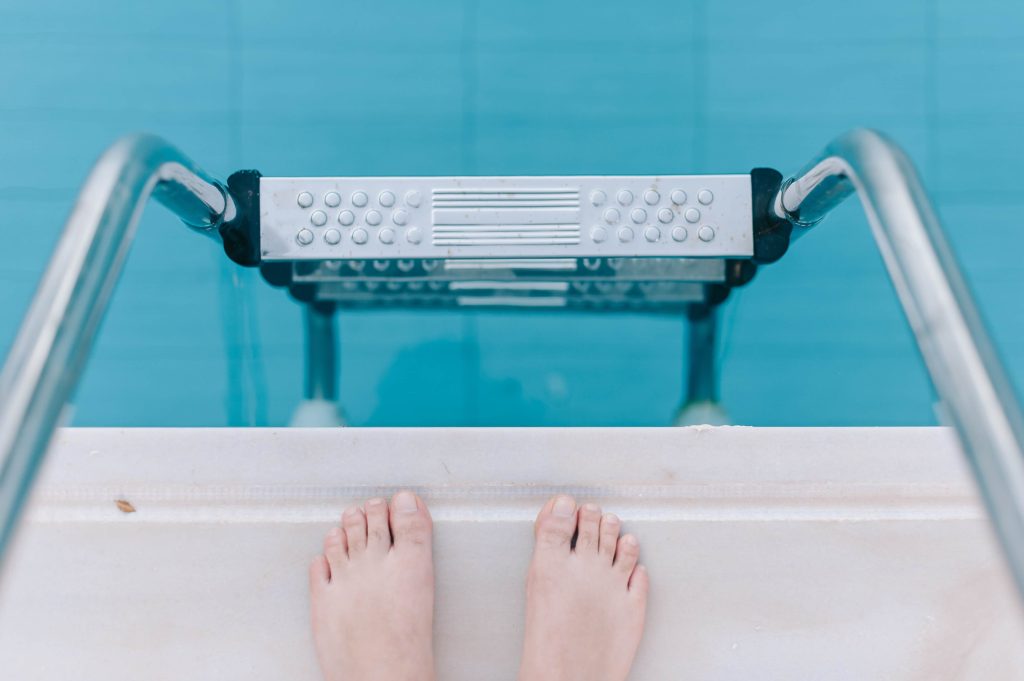Exercising in water can be less painful due to the fact that it eliminates the excessive force on your joints. People have been looking for different ways of rehabilitation after a sports injury, an accident, or an injury at work. One natural and effective remedy is Hydrotherapy.
Aquatic therapy uses the natural properties of water to reduce pain and strengthen your muscles. So, it is a safe and ideal method to heal without putting too much pressure on your body.
In this blog, you’ll learn about aquatic therapy for rehabilitation after injury, how it works, and what type of injuries it cures. But before we get into the details of how it helps treat different injuries, you need to know what Hydrotherapy is all about.
So, what is hydrotherapy?
Hydrotherapy, also referred to as hydrotherapy or aquatic physiotherapy, is a water-based physical therapy that involves therapeutic exercises after injury. Water is a great medium for exercising, and its properties, such as buoyancy, hydrostatic pressure, and resistance, create a supportive environment for rehabilitation.
Hydrotherapy reduces the stress on your muscles and joints and allows for more comfortable movement. This can be significantly beneficial for patients recovering from joint injuries or other musculoskeletal conditions.
How does hydrotherapy support rehabilitation after injury?
The natural properties of water allow individuals to exercise with less pain and greater effectiveness. In hydrotherapy, the water is kept warm, which helps relax the muscles and improve blood circulation. This warmth contributes to healing and helps reduce inflammation.
Let’s figure out how it works!
Water Resistance Strengthens Muscles
Water requires you to move harder through it due to its resistance on your body. In this way, your muscles work to build strength without the risk of injuries associated with traditional exercise.
Hydrostatic Pressure Naturally Reduces Swelling And Improves Circulation
Water has such a unique property that it reduces swelling and improves blood flow in your body. This can be significantly beneficial in healing processes.
Buoyancy Relieves Joint Pressure And Supports Movement
You feel lighter when you are moving underwater because the water supports your body in movement. This property of water reduces pressure on your muscles, joints, and bones.
Warm Water Therapy Eases Muscle Tension And Pain
Warm water increases flexibility and allows your body to stretch and move smoothly. Most aquatic therapy sessions are arranged in a warm pool due to its muscle stress-relieving effects.
Safe And Effective Cardio For All Fitness Levels
Aquatic exercises, such as a water treadmill or aqua bikes, can be beneficial for your heart health. The good part is that these exercises improve your cardiovascular health without putting extra stress on your body.
Potential Benefits of Aquatic Therapy For Rehabilitation After Injury
Aquatic physiotherapy provides the following benefits to individuals after injury.
Better Movement Without Pain
The warm water provides relaxation to your tight muscles and improves mobility after injury. You may feel more flexible and active during your underwater therapy.
Relief From Pain And Stiffness
Water allows individuals to move without experiencing pain or pressure on their injured joints or bones.
Restore Balance And Physical Confidence
There is no risk of falling while exercising in water. In fact, water helps you regain your balance and coordination.
Aquatic Therapy Speeds Up The Recovery Process
Hydrotherapy promotes natural healing processes. This can help individuals recover faster after a workplace or an accident injury.
What injuries can be treated with hydro physiotherapy?
Hydrotherapy can be effective in treating different injuries, such as:
Treatment For Work-related Injuries
Hydrotherapy can be beneficial for individuals who perform repetitive movements, sit for long periods of time, or engage in heavy lifting. It relaxes tight muscles and strengthens them.
Recovery from Sports Injuries
Athletes suffering from muscle strain and other injuries use a warm water pool to exercise. This is because hydrotherapy reduces pain and helps them regain their strength without stressing the injured area.
Lower Body Rehab
Aquatic therapy supports the body’s weight and allows for easy movement for patients suffering from lower limb injuries.
Treatment For Osteoarthritis
Osteoarthritis patients feel joint pain and stiffness. Warm water is an excellent choice to reduce pain in joints and allow for pain-free stretching and strengthening exercises.
Rehabilitation After Fracture And Falls
Aquatic therapy provides a controlled environment to support the healing of broken bones or other serious injuries. It primarily reduces the pressure on injured body parts during exercise.
These are a few examples of how aquatic therapy can treat different injuries. It is the best choice to perform low-impact and highly effective exercises in water. With its ability to reduce strain and speed up healing, aquatic therapy provides a supportive environment for rehabilitation.
Conclusion
Aquatic therapy is more than just exercise in water. It helps people heal faster with less pain. The warm water relaxes muscles and improves movement. It also supports the body, so there’s no pressure on sore joints or bones. You can recover more easily from a sports injury, a fall, or joint pain with the help of this therapy. It’s a safe, natural way to get strong again and feel better sooner.
Frequently Asked Questions
What is the purpose of hydrotherapy?
Hydrotherapy restores your strength and ability to exercise like you once did, without the intense stress and pain associated with traditional exercises. It provides benefits for patients suffering from pain due to several injuries.
How does aquatic therapy reduce swelling?
Hydrostatic pressure plays a key role in reducing swelling, whether it is injury or other health conditions, including diabetes.
What can you expect from aquatic therapy?
Hydrotherapy provides benefits such as improved muscle strength and balance, better joint flexibility, and reduced pain.
What are the common aquatic therapy techniques?
Hydrotherapy techniques are simple, such as walking, jogging, or resistance training. Warm water relaxes your muscles, and an underwater treadmill offers resistance for strengthening exercises.


